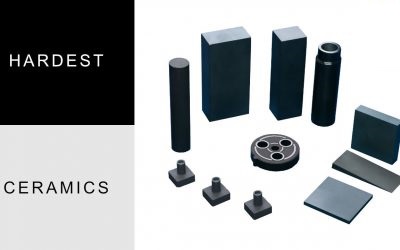Ceramic blades are a relatively new product. Developed for processes that originally required round rotating blades where down time to change them was an issue to the production line, the longer run time of ceramic blades improved efficiency.
Ceramic blades in industrial processes developed, both in materials and complexity of design, spilling over into commercial kitchens and finally into households for everyday use.
Blades for scalpels and utility knives and a whole range of industrial blades are now available. But the strengths and weaknesses of the blades require careful consideration against cost and lifespan compared to their steel counterparts.
Ceramic blades are non-magnetic, which can be a problem in food industries where magnets are used to safeguard produce from metal fragments and possible pieces of snapped blades. But in areas around magnetic fields where a lose blade can become a danger, they come into their own.
On one hand, ceramic blades are harder and last longer in harsh cutting applications such as the cutting of fiberglass, which tends to dull metal blades. On the other hand, ceramic blades are more prone to impact and if dropped can break. Furthermore, if a process involves cutting or slicing, ceramic blades have an advantage on lifespan. But if the process involves levering or contact with metal surfaces or any hard object, then the blade life can be reduced.
The use of ceramic blades increased when sushi chefs started promoting them, mainly because they did not taint the delicate fresh fish which some metal knives did. The use of ceramic knives peaked with over 20 million sold a year, mostly for the home kitchen where people endeavored to emulate their favorite TV chefs.
The blades did have some issues where the radial curve on many designs varied and did not lend themselves to diamond grinding by automatic systems. The best response to this was a manual grinding approach using skilled grinders to apply the finishing touch.
Geoff Randle, China Ceramic Parts Business Director, comments …
“From a personal point of view, I have used ceramic knives in my kitchen for about 10 years and the 5-year-old knife I currently use has a number of small chips on the blade, mostly as a direct result of my mishandling and dropping of the knife. The blade remains sharp enough to cut a very soft tomato into very thin slices. My earlier attempts to use a ceramic knife without mind to the recommendations, and using it on inappropriate surfaces such as glass and levering the blade instead of just cutting, led to early failures.
Ceramic knives can only be re-sharpened with a diamond tool and so a 5-year blade life without sharpening is pretty impressive.
The foodstuff I have found most troublesome to cut is cheese. The cutting edge works well. But as the highly polished blade cuts through the cheese, it creates a vacuum-like condition and the cheese becomes firmly stuck to the blade.”




